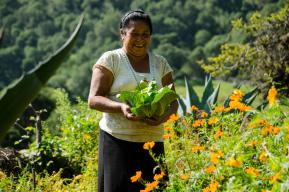Idea
Innovation for mitigation

Besides the clear importance of engaging and educating the public regarding tsunami preparedness and safety measures, constant development and improvement of identification and warning systems also plays a key role in preserving lives and livelihoods in the face of these otherwise unpredictable disasters.
The United Nations’ Ocean Decade 2021 – 2030 marks a global effort to push the boundaries of ocean-related science across ten challenges. Challenge 6 aims to enhance early warning services for ocean and coastal hazards, as well as mainstream community preparedness and resilience.

In line with the Ocean Decade motto – “the science we need for the ocean we want” – the Intergovernmental Oceanographic Commission (IOC) of UNESCO promotes the development of state-of-the-art projects to enhance the timeliness and reliability of tsunami detection technology.
Catching tsunamis from way, way above
One such project focuses on wielding satellite measuring capabilities to swiftly and accurately identify tsunami events in real-time. It is called the Total Variometric Approach, and it does so by monitoring both ground motion and perturbations in the upper atmosphere – which massive tsunami waves can cause – to detect such events.
With the right algorithms, procedures, and altitude for detecting earthquake and tsunami perturbations, the TVA can prove a powerful tool to enhance the efficiency, reliability and accuracy of tsunami warning systems.
Tens of thousands of people and billions of dollars in assets are threatened by the global tsunami hazard. […]. We will save lives by looking at the sky.
AI-powered prediction
The programme can calculate the tsunami size on all coastlines associated with the 2004 Sumatra earthquake in less than half a minute. Incorporating historical data only enhances the accuracy of the predictions further, resulting in more timely warnings, fewer false alarms and improved response measures.
[IOC/UNESCO] gives us a platform to collaborate and discuss the different stages of our technology with tsunami experts, and facilitates access to real-time data that helps fine-tune it in real operational environments.
Technology and innovation play a key role in risk prevention worldwide, and such cutting-edge developments regarding the accuracy and efficiency of tsunami warning systems, paired with international cooperation, may well be responsible for saving hundreds of thousands of lives.









